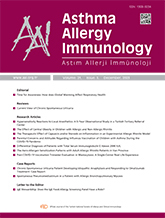


Chronic spontaneous urticaria (CSU) is a disorder that persists for more than six weeks and is not caused by a defined physical stimulus. It can be seen in all age groups, ethnicities, and geographical regions and affects approximately 1% of the population. Current data suggests that CSU is an autoimmune-related disease. Two separate endotypes have been identified based on the character of autoantibodies that play a role in mast cells (MCs) activation. According to the Gell and Coombs hypersensitivity classification, CSU caused by IgE type auto-antibodies is classified as type-I endotype (type-I aiCSU), whereas CSU caused by IgG type autoantibodies is classified as type-IIb endotype (type-IIb aiCSU). While both endotypes exhibit similar phenotypic characteristics, there are clinical differences in disease activity, accompanying comorbidities, and treatment response. The triple positivity of autologous serum skin test (ASST), basophil activation tests (BAT), and IgG type autoantibodies against MCs high-affinity IgE receptor (FcεRI) or IgE is considered in favor of type-IIb aiCSU, while positivity of IgE type autoantibodies suggests type-I aiCSU. The guidelines recommend the use of second generation antihistamines for first-line treatment. Omalizumab, an anti-IgE monoclonal antibody, is a treatment option in cases that do not respond to high-dose antihistamine therapy. Type-IIb aiCSU has a poor response to antihistamines and omalizumab but cyclosporine shows a favorable result in this group. Determination of endotypes in CSU might be an important step for defining of treatment selection. Further studies are needed to reveal more specific biomarkers and to develop new treatment agents.